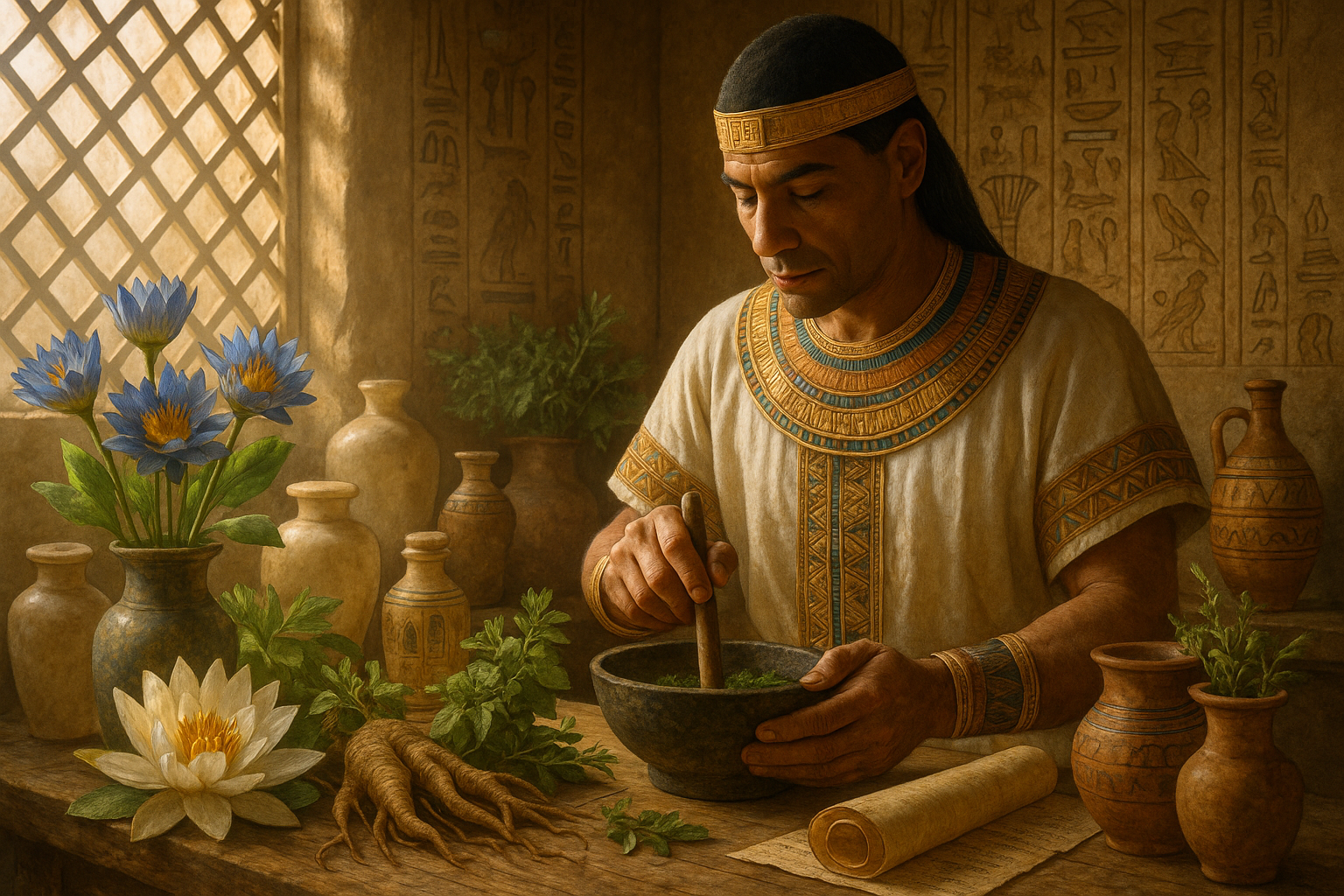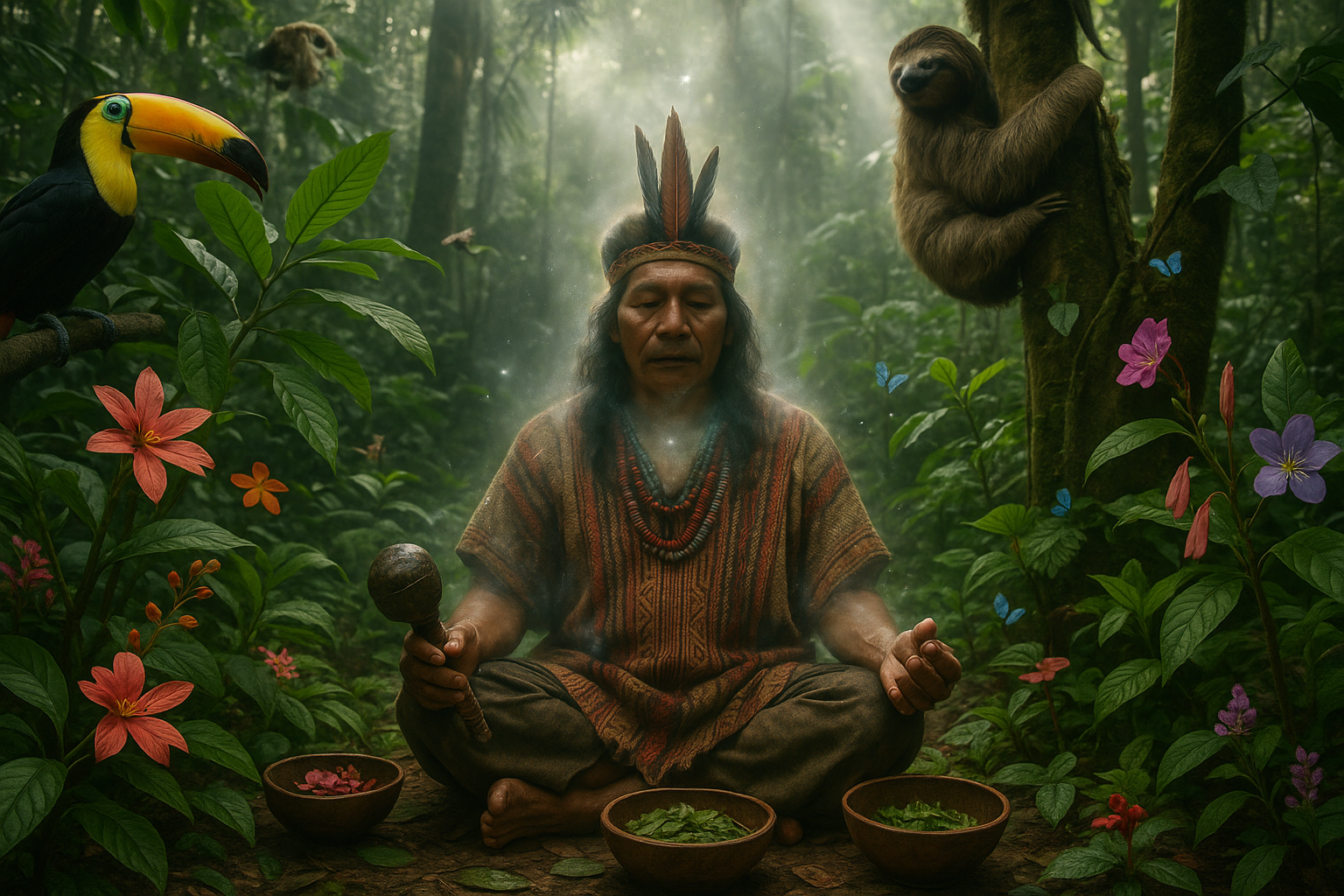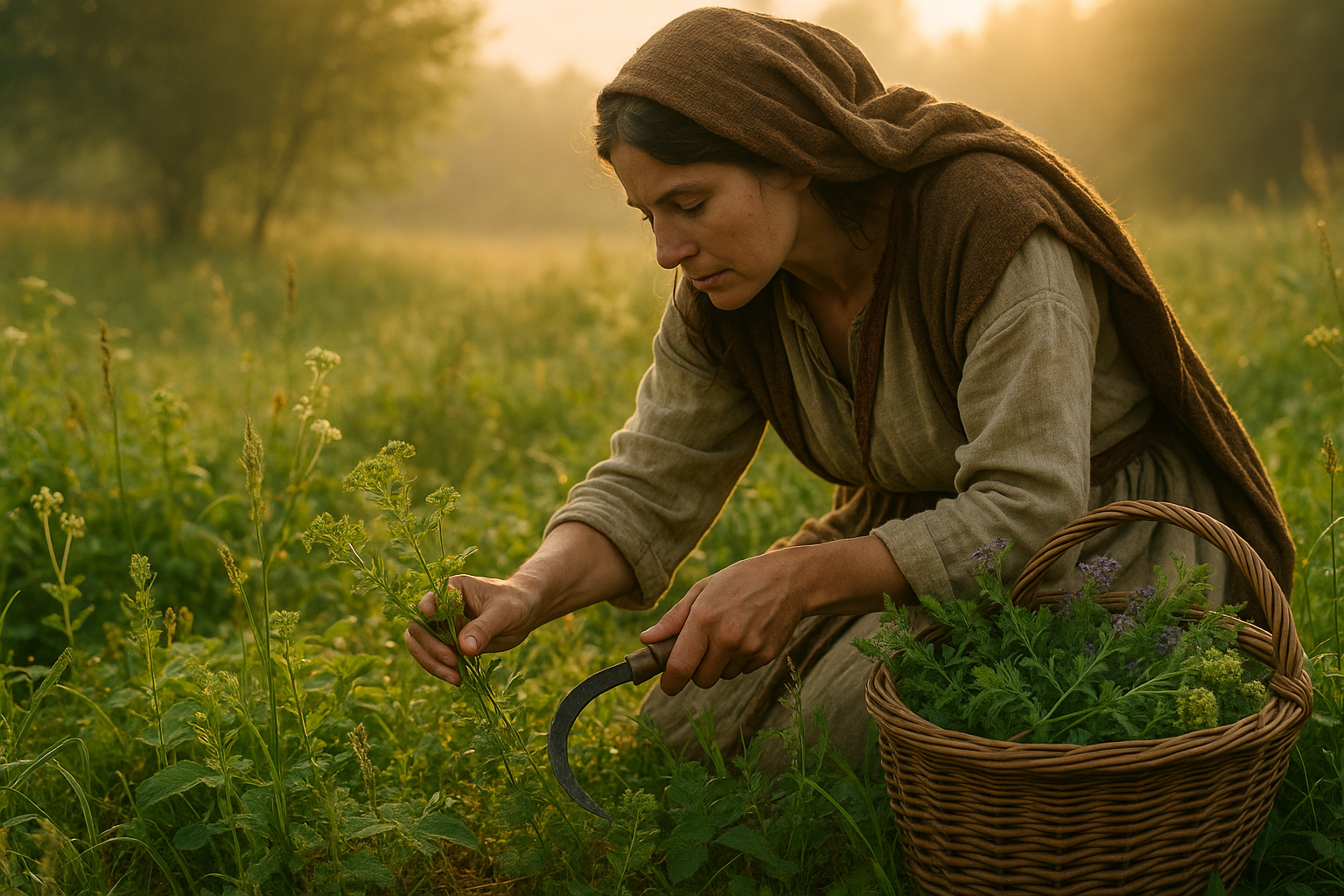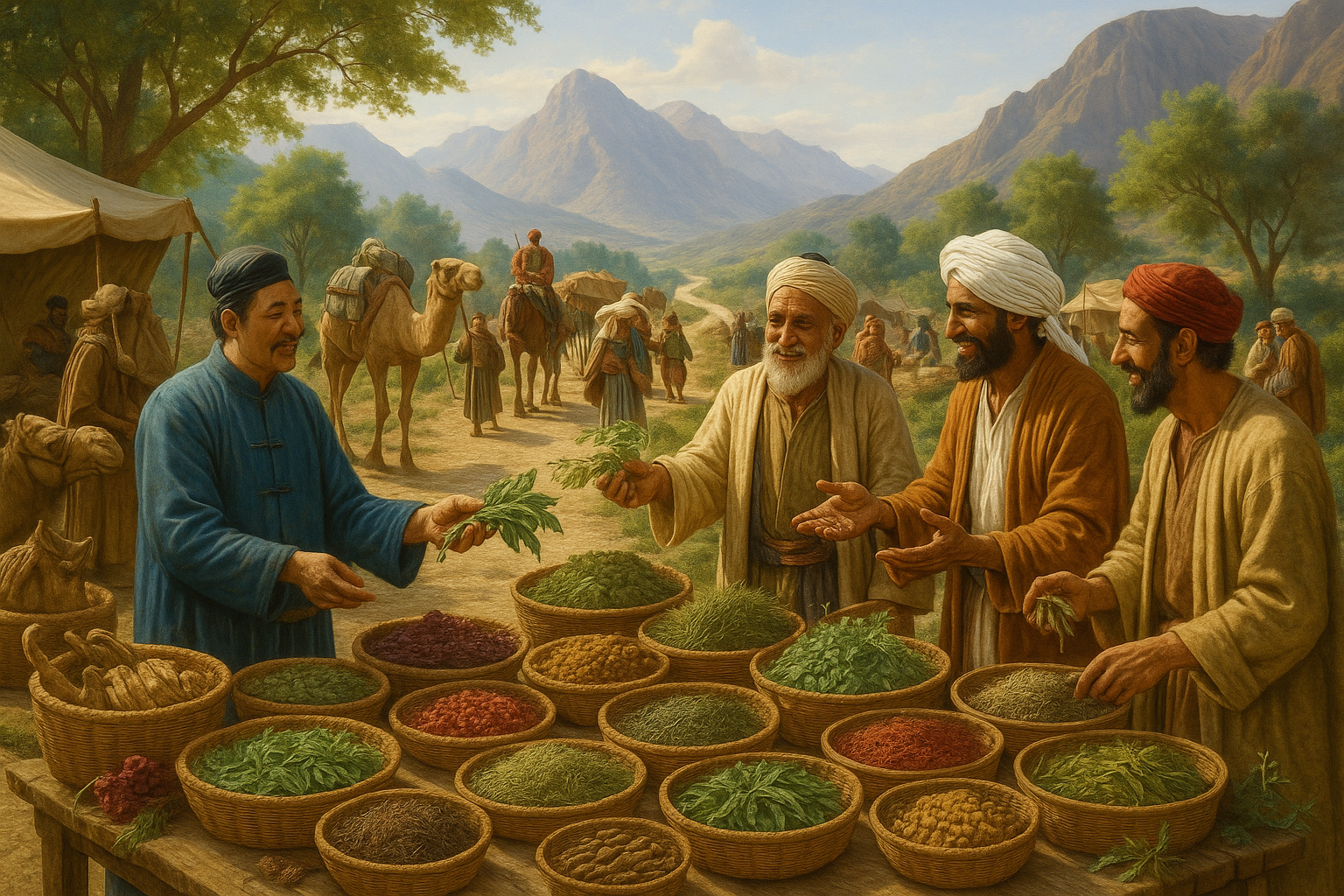In the heart of the ancient Egyptian civilization, where the Nile’s gentle flow sustained life and pyramids reached for the heavens, a fascinating intersection of mysticism and medicine emerged. This realm, often shrouded in mystery, is where the art of healing transcended the mere physical, intertwining with the spiritual. 🌟 The surgical rituals of ancient Egypt are a testament to a sophisticated understanding of the human body and the universe’s cosmic energies. As we delve into this enigmatic world, we uncover practices that not only healed the body but also nurtured the soul.
Our journey through the annals of Egyptian history reveals a civilization deeply committed to the pursuit of knowledge and the mysteries of life and death. At the core of their healing practices was a profound belief in the interconnectedness of all things. The ancient Egyptians viewed health as a state of harmony between the body, mind, and spirit—a philosophy that resonates with many contemporary holistic health approaches.
As we explore the mystical world of Egyptian surgical rituals, we will uncover the layers of symbolism and tradition that underpinned their medical practices. From the intricate rituals performed by priest-physicians to the use of amulets and incantations, these ancient healers employed a rich tapestry of techniques to restore balance and health.
One cannot explore Egyptian surgical rituals without acknowledging the dual role of the physician and the priest. In a society where the divine and the earthly were inseparable, healing was as much a spiritual practice as it was a physical one. The priests, often regarded as intermediaries between the gods and the people, wielded both scalpel and incantation with reverence and precision. Their surgeries were not merely technical procedures but sacred rites conducted under the watchful eyes of deities like Thoth and Sekhmet, the goddess of healing and warfare.
The tools of the trade, which have been unearthed in archaeological sites, reveal the advanced nature of Egyptian medical practices. Scalpels, forceps, and other instruments, some of which bear striking resemblance to modern tools, speak to a level of sophistication that was well ahead of its time. Yet, it was not just the physical tools that defined their practice, but the ceremonial rituals that accompanied each procedure.
Central to these rituals was the use of magical incantations and amulets, believed to protect both the patient and the practitioner. These elements, woven into the fabric of the healing process, highlight the Egyptians’ understanding of the power of the mind and belief in influencing health outcomes. As we will see, these practices have intriguing parallels to modern psychosomatic medicine, which acknowledges the significant role of the mind in physical healing.
Moreover, the ancient Egyptians were pioneers in the use of natural remedies and herbs, many of which form the basis of today’s pharmaceutical advancements. Their pharmacopoeia included a vast array of plants and minerals, meticulously documented in medical papyri like the Ebers Papyrus. These texts, a treasure trove of medical knowledge, offer insights into the treatments used for a wide range of ailments, from wounds and fractures to more complex conditions.
As we unravel the tapestry of Egyptian surgical rituals, we will also examine their impact on subsequent cultures and medical practices. The knowledge and techniques developed by the Egyptians laid the groundwork for future advancements in medicine, influencing Greek and Roman practices and eventually reaching into modern medicine.
In our exploration, we will address key questions: How did the Egyptians’ spiritual beliefs shape their approach to surgery and healing? What can we learn from their integration of mind, body, and spirit in medical practice? And perhaps most intriguingly, how can these ancient rituals inform and enrich our understanding of health and healing today? 🌿
Join us as we embark on this captivating journey through time, unearthing the secrets of a civilization that, despite the passage of millennia, continues to inspire and inform. By understanding the holistic and spiritual dimensions of ancient Egyptian medicine, we may find new pathways to healing in our own lives.
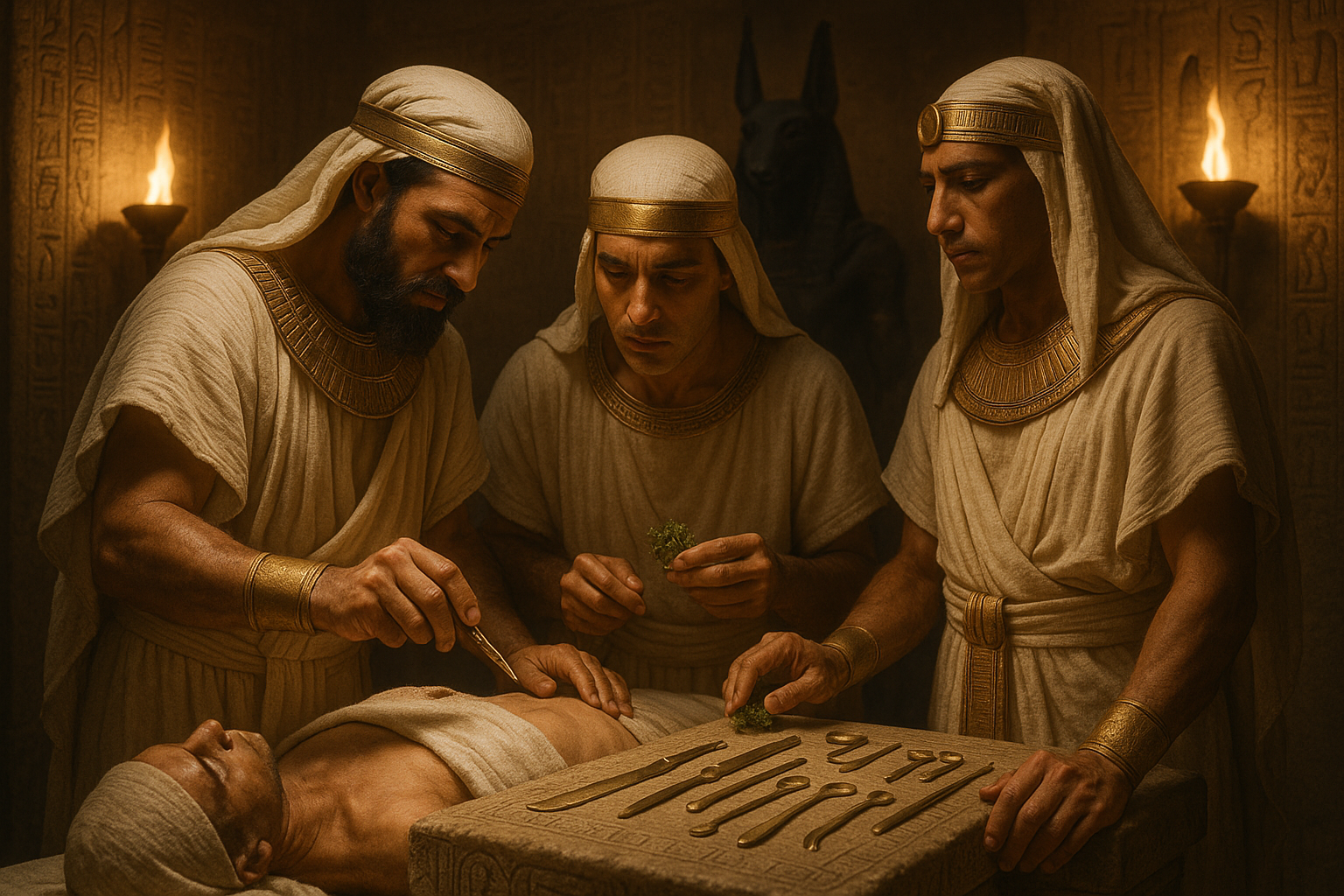
Conclusion: Bridging the Ancient and Modern Worlds
As we draw this exploration of ancient Egyptian surgical rituals to a close, it becomes evident that these age-old practices offer a fascinating glimpse into the early intersection of medicine, spirituality, and culture. Throughout this article, we’ve delved into the intricate tapestry of beliefs and methodologies that characterized Egyptian healing. From the meticulous use of herbs and natural remedies to the symbolic rituals that accompanied surgical procedures, the ancient Egyptians showcased a profound understanding of the human body and its ailments. Their holistic approach, which intertwined the physical and spiritual realms, highlights a legacy that continues to inspire modern medicine. 🌿
One of the key takeaways from our journey is the Egyptians’ advanced knowledge in the field of surgery and healing. Despite the limitations of their time, they exhibited remarkable surgical skills, as evidenced by their ability to perform intricate procedures such as trepanation and dental surgery. The inclusion of religious and spiritual elements in these practices underscores their belief in a harmonious balance between body and soul, a concept that still resonates in today’s integrative medicine approaches.
Furthermore, the role of the swnw, or ancient Egyptian physicians, cannot be understated. These practitioners were not only skilled in medical techniques but were also revered as intermediaries between the divine and mortal worlds. Their extensive training and knowledge, often passed down through generations, laid the groundwork for medical traditions that would influence subsequent civilizations. The meticulous records found in papyri, such as the Edwin Smith Papyrus, continue to provide invaluable insights into their medical practices and philosophies.
In addition to the surgical techniques themselves, the use of magical incantations and amulets during procedures highlights the Egyptians’ commitment to ensuring holistic healing. These practices, though mystical in nature, served to create a comforting and reassuring environment for patients, much like the role of psychological support in modern healthcare settings. The integration of mind, body, and spirit in their healing rituals offers a compelling narrative for contemporary practitioners seeking to enhance patient care through holistic approaches.
As we reflect on these ancient practices, it’s essential to acknowledge their enduring influence on modern medicine. Many contemporary healing techniques can trace their roots back to these early innovations, demonstrating the timelessness of the Egyptians’ contributions. By examining these ancient practices through a modern lens, we gain a deeper appreciation for the complexities of early medicine and the innovative spirit that drove these ancient healers.
The importance of preserving and studying these historical practices cannot be overstated. They offer not only a window into the past but also serve as a source of inspiration and knowledge for future generations. By understanding the holistic approaches of the ancient Egyptians, we can develop more comprehensive and empathetic healthcare practices that honor the interconnectedness of all aspects of health and well-being. 🔍
We encourage you, dear reader, to delve deeper into the mystical world of ancient Egyptian medicine. Whether through further research or by applying some of these holistic principles in your own life, there is much to be gained from embracing the wisdom of the past. For those interested in exploring more about this topic, we recommend visiting resources like the British Museum and the Metropolitan Museum of Art, which house extensive collections and research on ancient Egyptian culture and medicine.
In closing, the mystical world of Egyptian surgical rituals invites us to reconsider our understanding of healing and wellness. By bridging the ancient and modern worlds, we not only preserve a rich cultural heritage but also enrich our own practices and perspectives. Let’s continue this journey of discovery and innovation, inspired by the wisdom of those who walked before us. We invite you to share your thoughts, insights, or questions in the comments below. Let’s foster a community of learning and exploration, united by our shared fascination with the mysteries of the past. 🌟
Thank you for joining us on this captivating journey. We hope it has ignited a spark of curiosity and a deeper appreciation for the remarkable legacy of ancient Egyptian healers. Please feel free to share this article with others who might be interested in exploring the intersection of history, culture, and medicine. Together, we can continue to unravel the mysteries of the past and apply their timeless wisdom to our modern lives.
Toni Santos is a researcher and practitioner specializing in the study of ancestral healing systems, energetic frameworks of the body, ancient herbal traditions, and sacred operative procedures. Through an interdisciplinary and historically-rooted lens, Toni investigates how humanity has preserved and transmitted knowledge of preventive health, subtle anatomy, plant medicine, and ritual intervention — across cultures, lineages, and sacred traditions. His work is grounded in a fascination with healing not only as physical remedy, but as carriers of hidden wisdom. From ancestral preventive health practices to energetic healing maps and ritual operative techniques, Toni uncovers the visual and symbolic tools through which cultures preserved their relationship with the body, spirit, and plant world. With a background in ethnomedical history and comparative anatomy systems, Toni blends archival research with practical study to reveal how ancient societies used plants, energy, and ceremony to shape health, transmit wisdom, and encode sacred knowledge. As the creative mind behind jirenx.com, Toni curates illustrated frameworks, historical case studies, and symbolic interpretations that revive the deep cultural ties between ancestral medicine, energetic healing, and sacred procedure. His work is a tribute to: The lost healing wisdom of Ancestral Preventive Health Practices The guarded rituals of Energetic Anatomy and Healing Maps The ancient knowledge of Herbal Pharmacology of Antiquity The layered sacred practice of Ritual Surgery and Sacred Operations Whether you're a traditional medicine scholar, energetic healer, or curious seeker of ancestral health wisdom, Toni invites you to explore the hidden roots of sacred medicine — one practice, one map, one ritual at a time.

